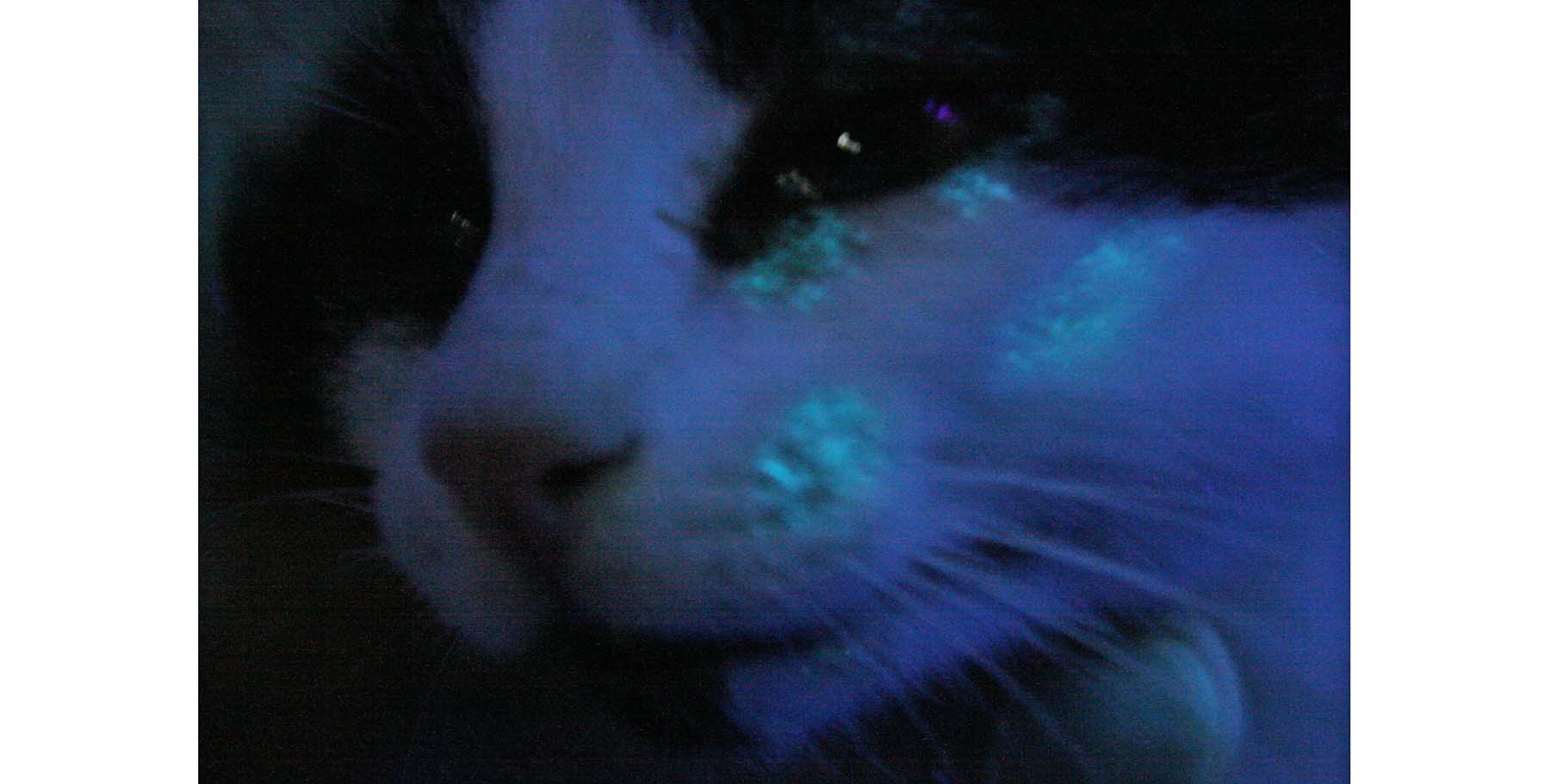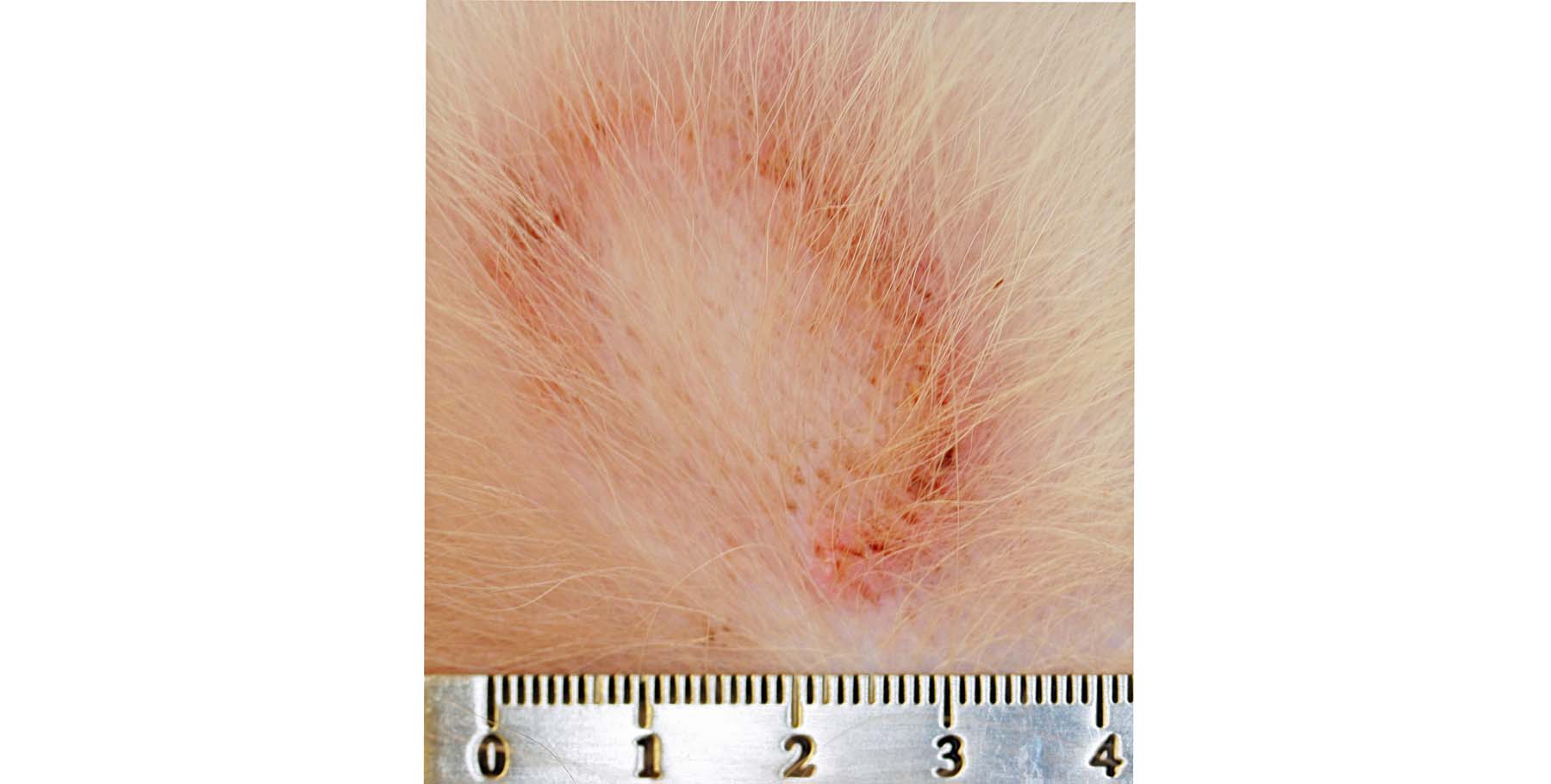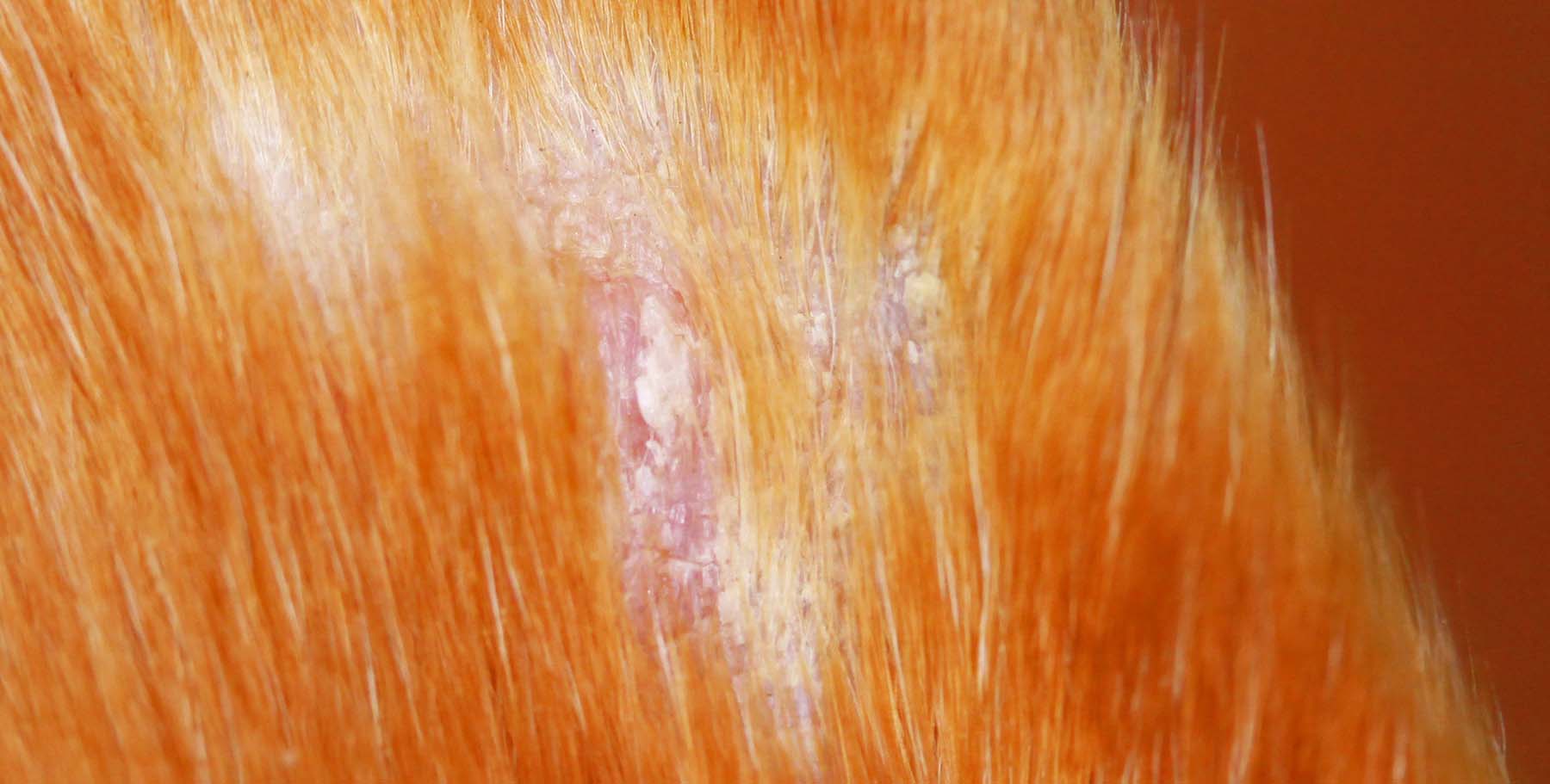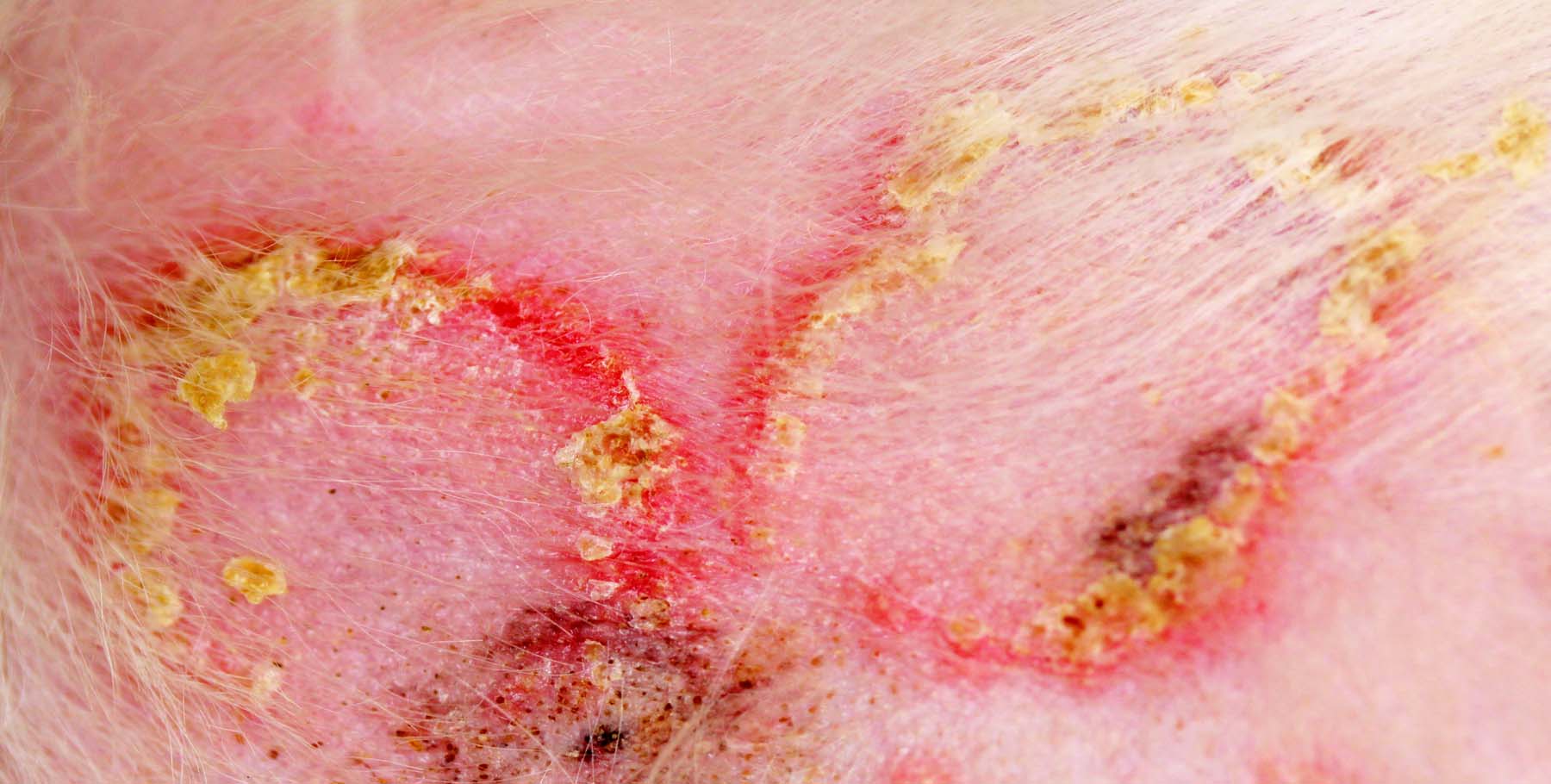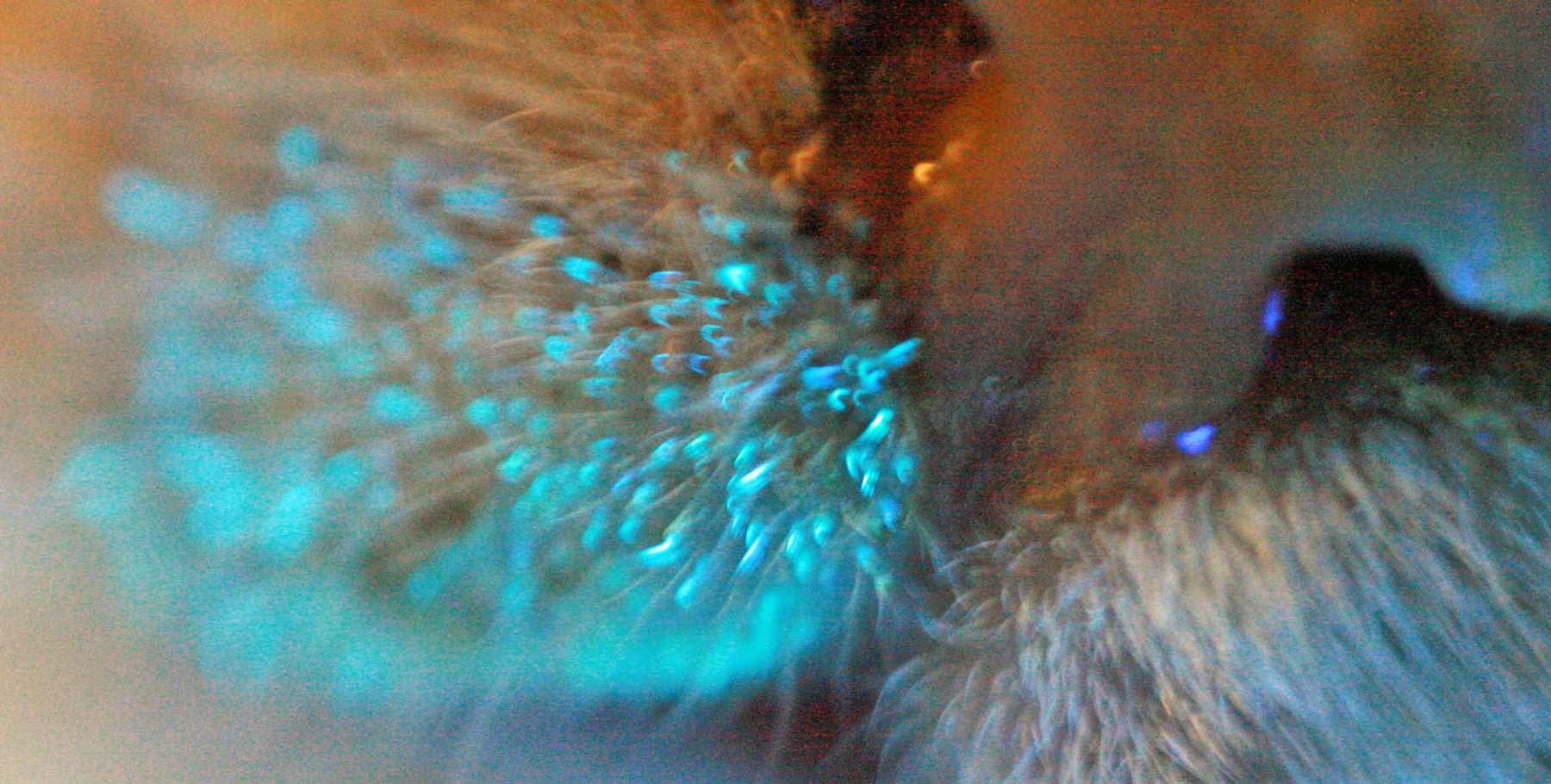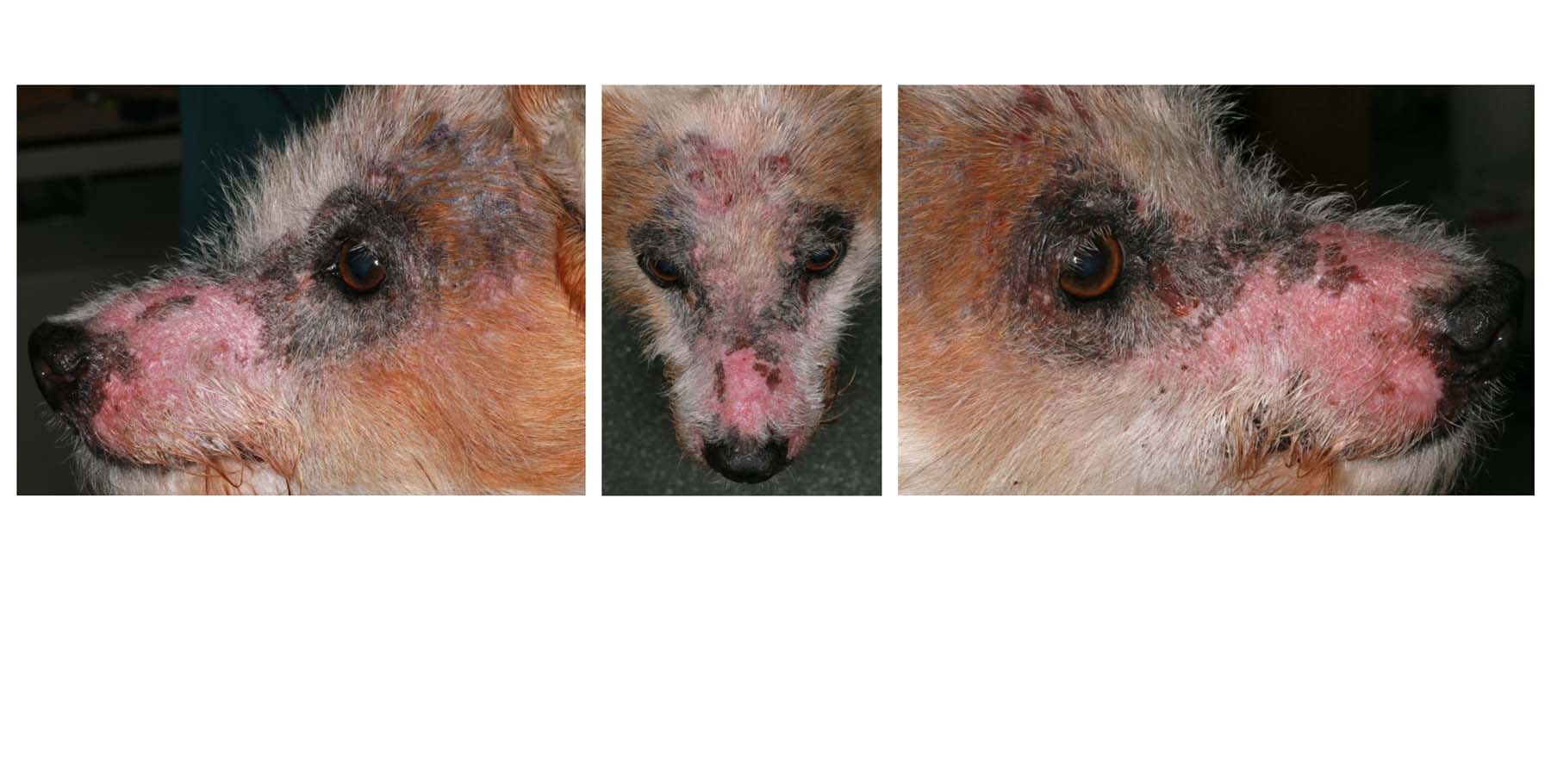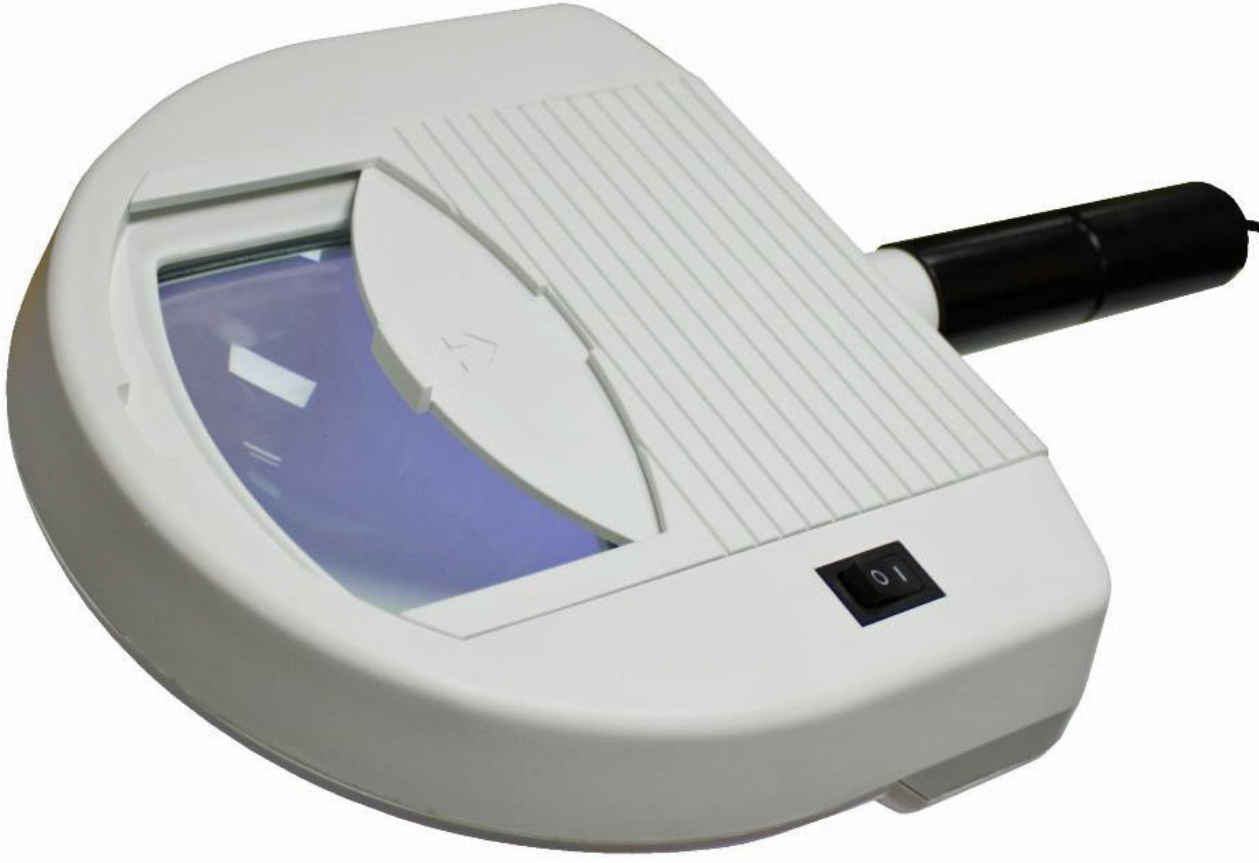Dermatophytosis, commonly known as ringworm, is a superficial fungal skin disease seen in cats and dogs. It is uncommon, in these pets, in the UK but it is commonly over-diagnosed by pet owners and veterinary staff alike. But it is an important skin disease because it is contagious, infectious and anthropozoonotic (it can be transmitted between animals and humans, not just from animals to humans but visa versa). Human medical professionals regularly ‘diagnose’ ringworm lesions in their patients, by clinical examination only, without any form of laboratory testing, and then incorrectly blame the patient’s pets as the root source of their infection. The most common pathogens of small animals belong to the genera Microsporum and Trichophyton.
No single diagnostic test has been identified as the gold standard. Warmed Wood’s lamp examination and direct microscopy are important initial screening tests but are insensitive. All kittens and cats plus young puppies and adults of predisposed dog breeds will be screened with a new Daray Medical Wood’s ultraviolet lamp during investigations.
In-house cultures (ChroMyco Duo® – Dermatophyte Test Medium plus Enhanced Sporulation Medium), external laboratory culture (Sabouraud’s Dextrose Agar) and microscopic identification after growth and gross examination (experienced mycologist), and/or PCR testing should be employed to rule out this condition if suspicion is high.
Successful treatment always requires concurrent use of systemic oral anti-fungal medication in addition to topical disinfection of the hair coat. This latter aspect of management plus physical cleaning is most important for decontamination of the exposed environments to reduce contagion and re-infection. Only one systemic anti-fungal oral solution is licensed for cats and an oral anti-fungal drug has finally now been licensed in the UK for dogs, both of which have a wide margin of safety.
Finally, serious complications of animal–human transmission are exceedingly rare.
This document reviews the existing literature and provides consensus recommendations for veterinary clinicians and lay people on the diagnosis and treatment of dermatophytosis in cats and dogs.
This article is free for all to access and kindly made available through the Wiley Online Library: DOI: 10.1111/vde.12440
Veterinary Dermatology Journal, June 2017, Volume 28, Issue 3, Pages: 266-e68, Karen A. Moriello, Kimberly Coyner, Susan Paterson and Bernard Mignon.
The important answer to all three questions posed on the image sliders is that none of them are dermatophytosis and they are the last condition in each list and therefore much more serious than a fungal or bacterial infection!

